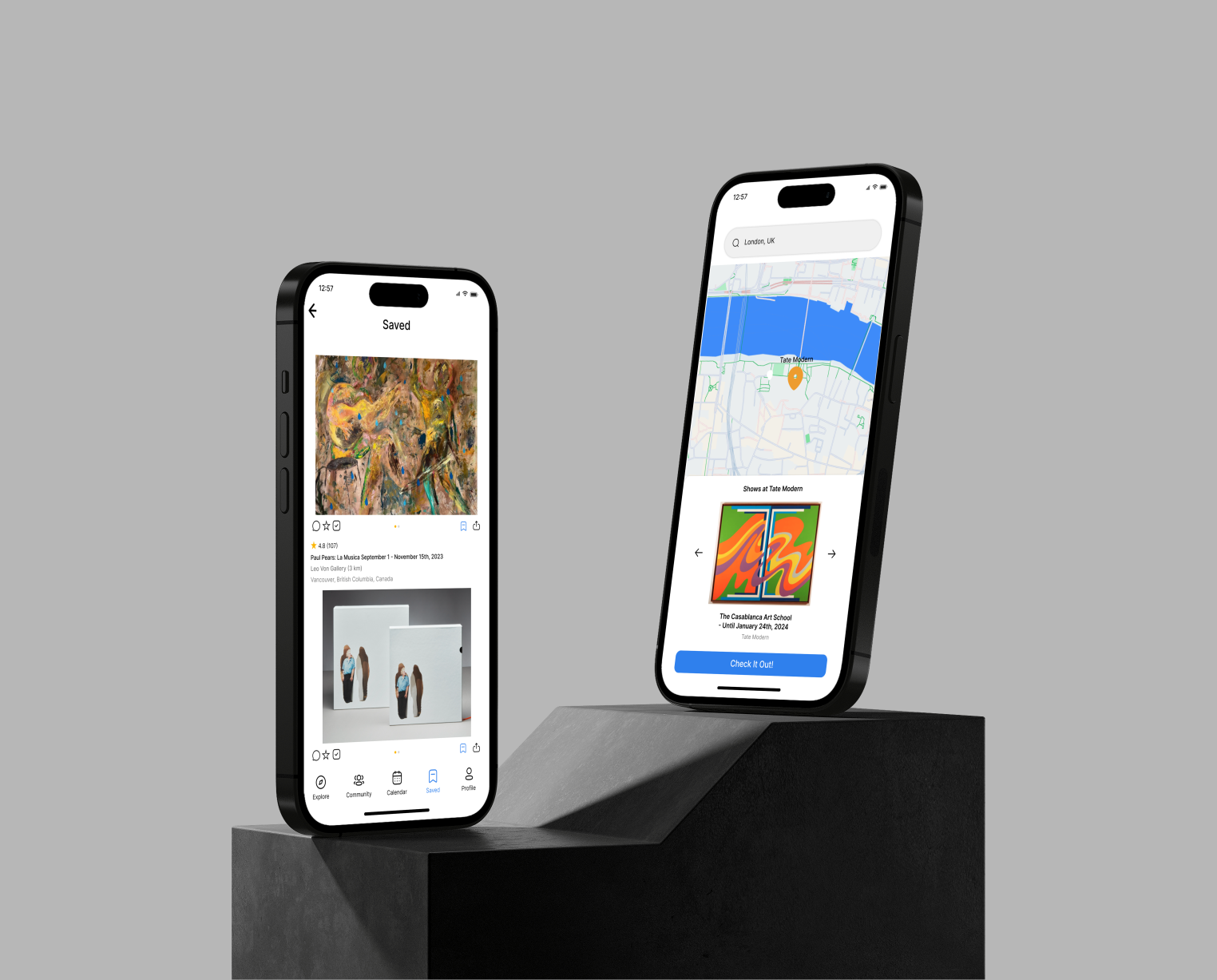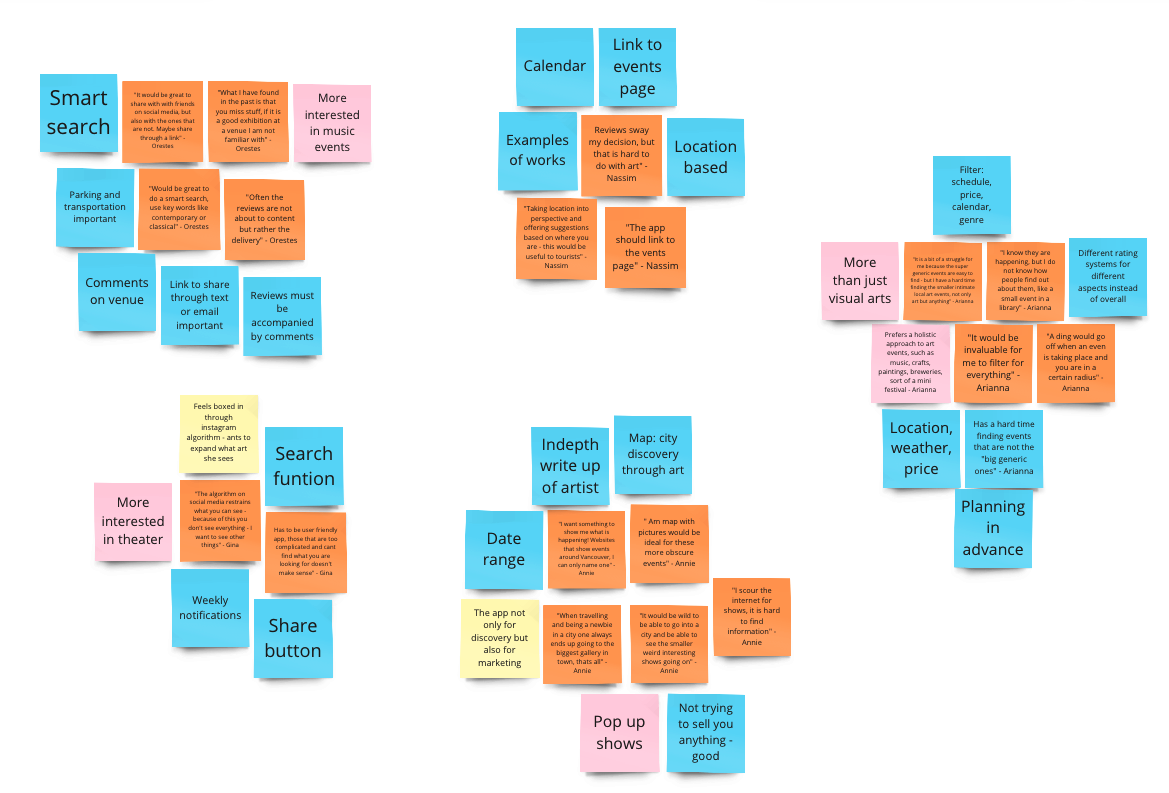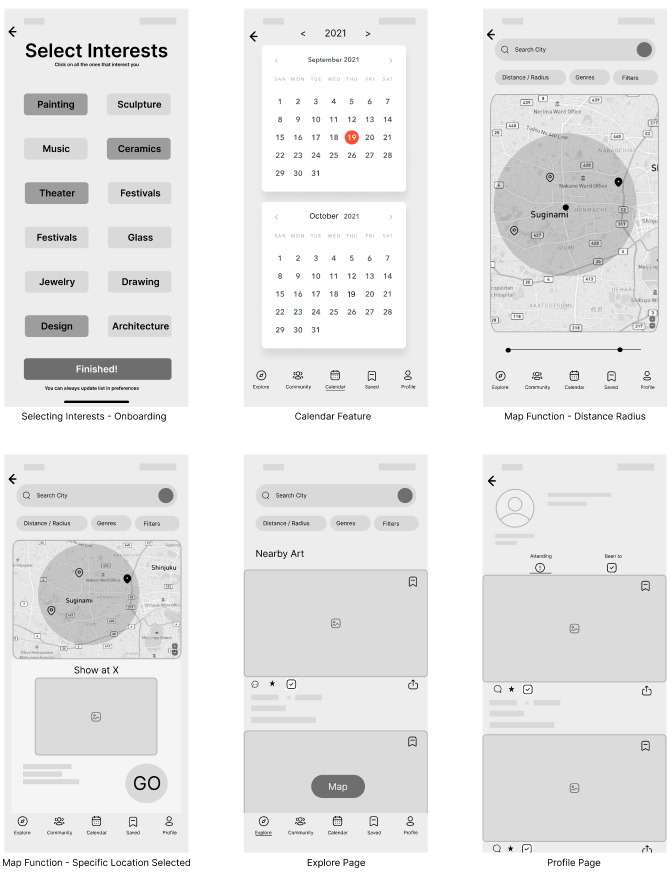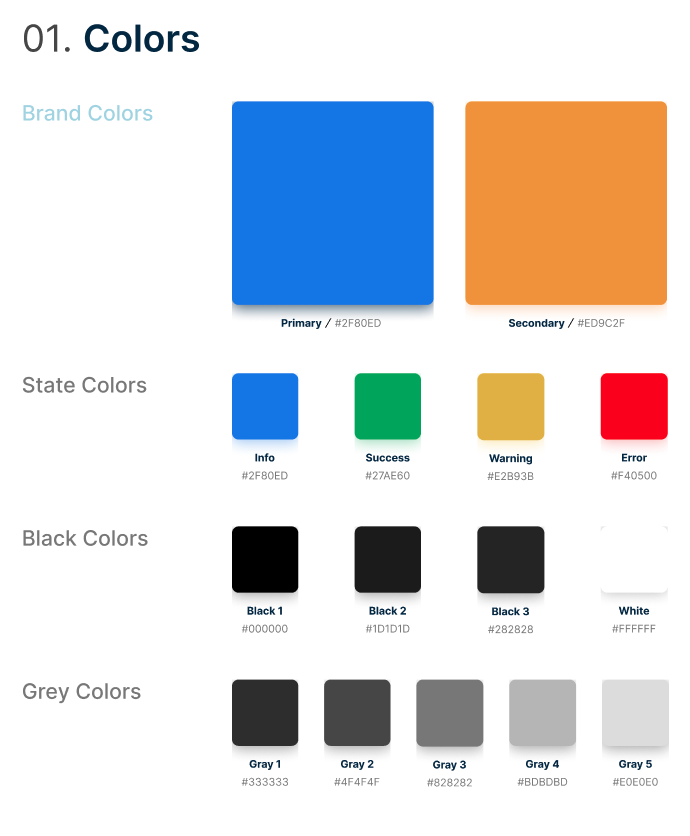DiscoveringArt App
Challenge: DiscoveringArt is an app that empowers users to explore and experience art, whether they are in their hometown or exploring a new city as tourists. The design challenge was to create a product that fosters art exploration while incorporating a social element.
Solution: Build an app that facilitates art exploration and community engagement. I employed a UX design process, including user research, design, testing, and implementation to develop an engaging app that meets users' needs, offering gratifying art exploration experience.
My Role: As the sole designer, I spearheaded this project working on all facets from the ground up.
Exposition
Surveys
Surveying art enthusiasts was a great way to gauge potential users. One outcome that shocked me was the lack of interest for viewing art through VR technology - Something I originally thought would be of high interest!
Highlights
No real interest for viewing art through VR technology and very high interest in art exploration as a local and a tourist in a city.
Interviews
To achieve a user-centric approach in the design process, I conducted interviews. These interviews not only validated design ideas but also identified latent issues, helping me prioritize features and design elements effectively.
Standout Quotes from Interview
“It is a struggle for me because the super generic events are easy to find, but I have a hard time finding the smaller intimate local art events, not only visual but all types of art. ”
“I want something to show me what is happening! I can only think of one website that shows events around my city. I scour the internet for shows, it is hard to find information.”
“When travelling and being a newbie in a city one always ends up going to the biggest gallery in town and miss the cool more obscure events. ”
Competitive Analysis
I researched and explored the market to find other apps and websites in the same space. Despite other options available, none of them shared the same focus on art exploration and community-building. Many of these platforms only covered large shows, overlooking smaller events featuring local artists.
Highlights
1. Generic content exclusively prioritizing major events.
2. No incorporation and featured aimed at community development.
Rising Action
Affinity Map
An affinity map was helpful in visualizing all the data and identifying patterns gathered in the surveys and interviews. I found it particularly useful in identifying the different pain points and all the overlaps between interviewees.
Persona & How Might We Statements
Key Findings
1. Interviewees want to be informed on many different types of art events. Varying from size of shows and genres.
2. Certain features like map, calendar, smart search and link to social media are really important.
3. Spontaneous messages from app informing user of events near them would be a great addition.
4. The same pain points for art discovery in own city and as a tourist.
5. Very important for users to be able to filter, search and be suggested specific events.
After analyzing the key findings from my research and gaining a deeper understanding for my users, I created a persona by the name of “Oscar,” to help guide my decisions during the design process.
How Might We Statements
Ultimately, all this research led to creating How Might We Statements which were crucial in the design process.
How Might We reduce the feeling of confusion to those trying to find an art event?
How Might We reduce the feeling of frustration to those that only hear about the big events happening?
How Might We reduce the user feeling sad when they miss an event they did not know about?
How Might We facilitate the discovery of art in the users city?
How Might We facilitate the discovery of art while the user is visiting a different city?
User Flows
The first path focuses on the onboarding process, a pivotal step where users personalize their preferences. This essential step informs the app about their interests, enabling it to suggest relevant art events tailored to their preferences effectively.
The second user flow illustrates the primary means of discovering art events: either through the intuitive map function or curated lists.
Site Map
What's interesting is how the design process unfolded, leading to significant changes and improvements in elements initially depicted on the map.
Sketches
These low-fidelity prototypes underwent testing using a guerrilla approach. These realizations proved instrumental in refining the design and paving the way for an enhanced user experience.
Highlights
Consistency across screens, selecting appropriate wording for different commands, and recognizing that the app offers multiple pathways to achieve the same goal.
Wireframes
After the guerrilla testing with the sketches, I proceeded with wireframe design, maintaining a low-fidelity approach. I knew I would be testing these wireframes, and anticipated making changes based on user feedback. Flexibility and adaptability were prioritized to fine-tune the final product according to user needs.
Mood Board & Style Guide
The subsequent stage in my design process involved crafting high-fidelity prototypes. The initial step in this endeavour was to establish a comprehensive style guide and a thoughtfully curated mood board.
Highlights
Certain buttons and wording did not resonate as anticipated, and specific flows required additional screens to achieve a smoother user experience.
Highlights
Mediterranean ambiance, blending a laid-back atmosphere with artistic expression. Calming presence of the ocean and the warm, earthy tones that characterize the Mediterranean region. The influence of art history, particularly the Renaissance era.
Climax
High Fidelity Prototypes
The social aspect was a key consideration when crafting DiscoveringArt. Insights gathered from interviews and surveys indicated its importance to users. Below, you'll find a selection of screens and features that highlight how this aspect was thoughtfully woven into the design.
The following video exemplifies users receiving a notification regarding nearby art events via the app, subsequently sharing these events with their social circle by seamlessly integrating them into their Instagram stories.
Highlights
Valuable feedback from users highlighted issues such as the map button being overlooked, icons not being entirely clear, and the need to streamline the process of personalizing preferences for users.
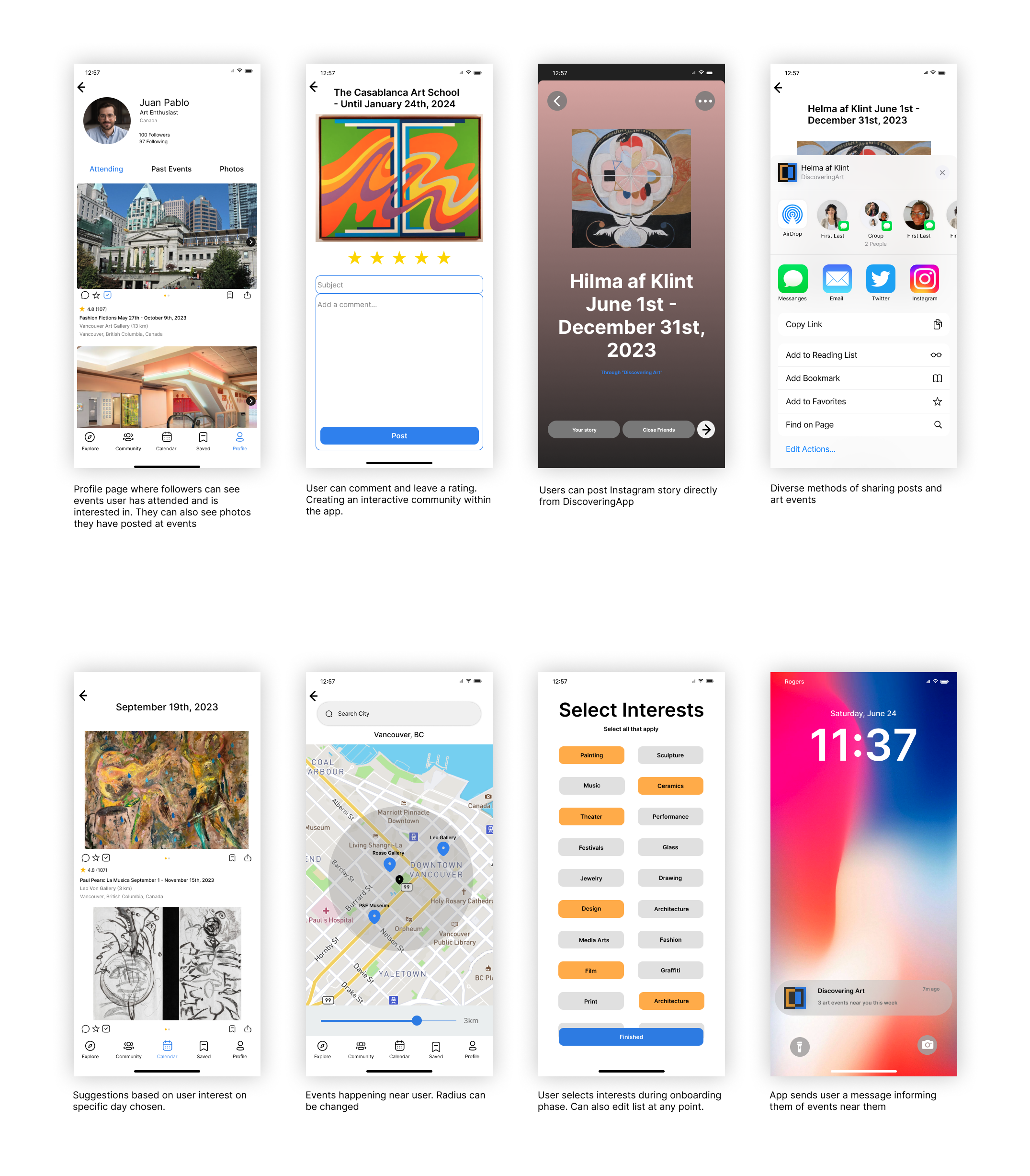
Resolution
Next Steps
Looking ahead, the focus remains on steady progress. Incorporating extra social features such as rewards and incentives could encourage greater app usage. Additionally, the plan is to introduce more screens to showcase functions beyond the red routes. These include enhancing user profiles with photo features and offering additional onboarding options to better understand users' interests. This way, the app can provide even more tailored suggestions.
